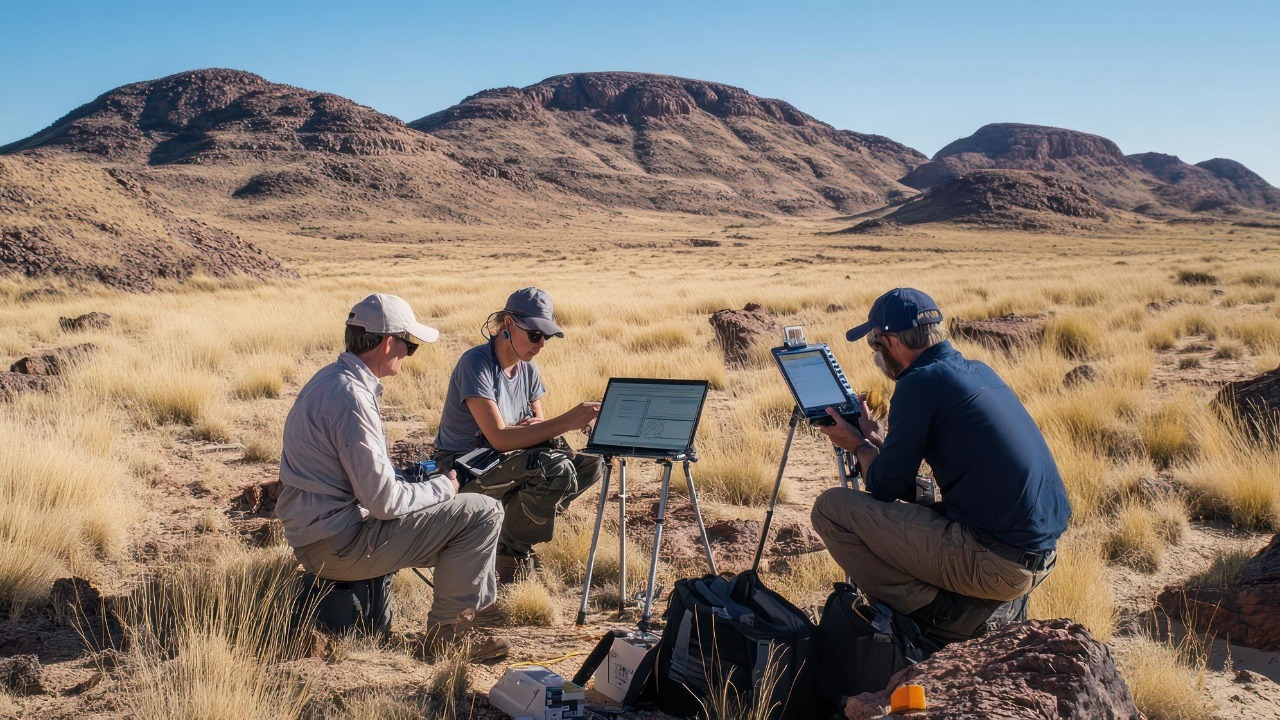
After decades of speculation and intrigue, scientists have finally unraveled the mystery surrounding the iron structures found in the Australian desert. These enigmatic formations, often referred to as “iron nuggets,” have puzzled experts due to their unique composition and ancient origins. Now, groundbreaking research sheds light on their formation and significance, offering new insights into Earth’s geological and climatic history.
The Enigma of the Iron Structures

The iron structures, known as “iron nuggets,” were first discovered in the arid regions of the Australian desert decades ago. These formations have intrigued both scientists and amateur geologists due to their unusual appearance and distribution across the landscape. Initially, various hypotheses were proposed to explain their origin, ranging from volcanic activity to meteor impacts. However, none could definitively account for their precise composition and widespread presence.
In the context of Australian history, these iron structures hold significant cultural and scientific value. They have been part of Aboriginal narratives and local folklore, often regarded as natural wonders that carry spiritual significance. Scientifically, these formations represent a puzzle that has long challenged researchers, who have sought to understand not just their origins but also what they reveal about the Earth’s past.
Geological Composition and Formation

Recent studies have provided a detailed analysis of the mineral composition of the iron structures, revealing a complex blend of iron oxides and other trace minerals. This composition suggests that the formations are the result of prolonged geological processes, including erosion, sedimentation, and iron mineralization. Over thousands of years, these processes transformed the desert landscape, forming the enigmatic nuggets that we see today.
Technological advancements have played a crucial role in these new findings. Innovations in radiometric dating and geochemical analysis have allowed researchers to pinpoint the age of the iron structures more accurately. These tools have enabled scientists to trace back the timeline of their formation, offering a clearer picture of their development over millennia. As mentioned in recent literature, these advancements are critical in understanding the geological history of regions like the Australian desert.
Decoding Climate Change Through Iron

The iron structures serve as invaluable records of climatic conditions spanning over 100,000 years. By analyzing the isotopic composition of the iron oxides, scientists can infer past climate events, such as changes in temperature and precipitation patterns. These formations act as natural archives, capturing the shifts in climate that have occurred over vast stretches of time.
There is a compelling correlation between the formation of the iron structures and historical climate events. For instance, periods of intense rainfall and subsequent arid phases have contributed to the oxidation and sedimentation processes that created these formations. Such insights are crucial for understanding not only the past climate but also potential future changes. As highlighted by a recent study, these findings have significant implications for our comprehension of climate dynamics and the long-term impacts of climate change.
The Role of Cutting-Edge Research

The recent breakthroughs in understanding the iron structures have been made possible through an interdisciplinary approach. Collaboration among geologists, climatologists, and archaeologists has been key to piecing together the complex history of these formations. By combining expertise from different fields, researchers have developed a more holistic understanding of how these structures came to be.
Innovative methodologies, including radiometric dating and geochemical analysis, have been pivotal in recent studies. These techniques have allowed scientists to determine the age of the formations with unprecedented precision, as well as to analyze the elemental composition of the iron nuggets. This has not only solved the mystery of their origin but also demonstrated the potential of these methods in addressing other geological puzzles. Further research in this field could lead to new discoveries in unexplored regions.
Implications for Future Exploration and Study

The insights gained from the study of the iron structures are likely to influence future archaeological and geological explorations in Australia and beyond. Researchers may now be more equipped to identify similar formations in other parts of the world, potentially uncovering new records of Earth’s climatic history. These findings underscore the importance of continued exploration and study, as they could reveal further secrets about our planet’s past.
Understanding Earth’s ancient history remains crucial for contemporary science and society. By learning more about how past climates have shaped the planet, we can better prepare for future environmental changes. The ongoing research into the iron structures serves as a reminder of the interconnectedness of geology, climate, and human history, highlighting the need for continued interdisciplinary collaboration. For more on this subject, the comprehensive studies on geological mysteries provide further context and understanding.